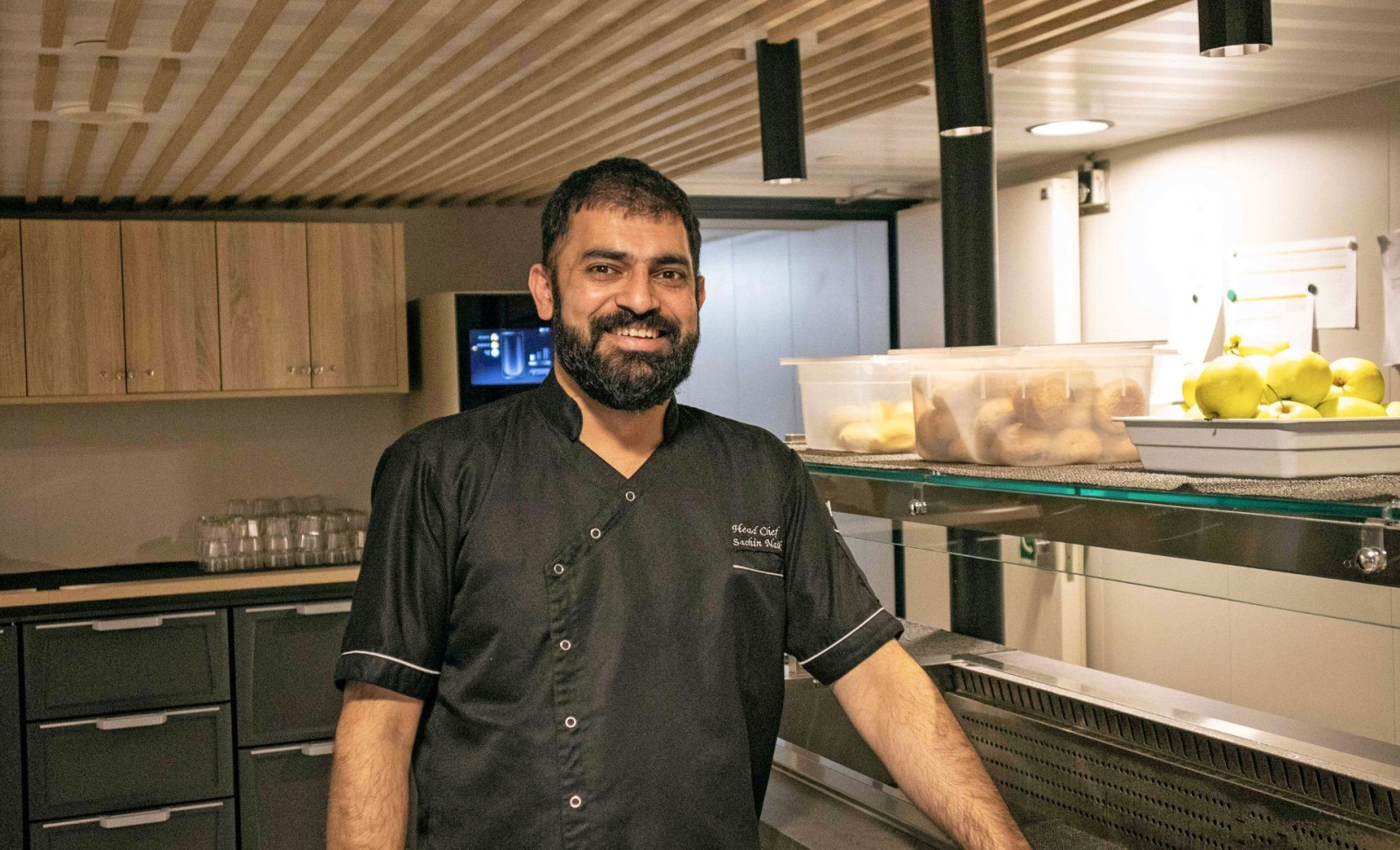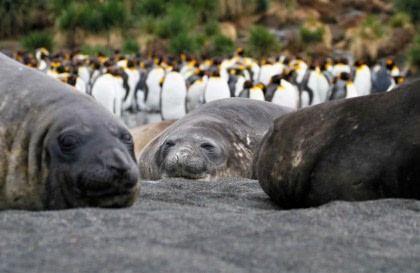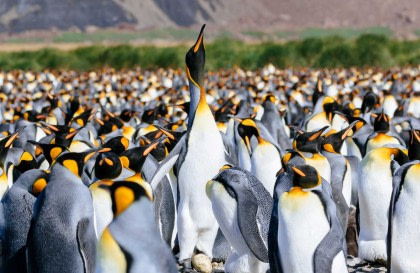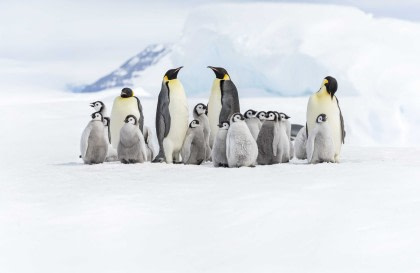Discover how Oceanwide Expeditions Head Chef Sachin Naik brings global flavors to unforgettable journeys at the edges of the world, and redefines our perception of vegetarian cooking.
Taking center stage may be the towering icebergs of Antarctica, colonies of penguins, or the majestic fjords of Greenland and Svalbard. But, surprisingly, some of the most vivid expedition memories take place not on deck, but at the dining table, chatting with fellow travelers and swapping tales, and tucking into a well-earned meal.
Oceanwide Expeditions' galley teams craft culinary experiences that mirror the adventurous spirit of each voyage, inviting guests to explore new dishes and the surprising flavors, especially regarding vegetarian cuisine. Head chef Sachin Naik balances nutrition, culinary flair, and a dining experience that elevates each expedition, infusing his menus with variety, creativity, and international flavors in some of the most remote parts of the world.
Making Food Shine in an Adventure-Packed Polar Experience
What makes vegetarian cuisine on an Oceanwide expedition cruise so remarkable and memorable is that it thrives in regions so remote and rugged. The immersion of daily activities and the staggering landscapes beyond the porthole stand almost at odds with the refined dining experience on board each of our vessels that, while classy, retains the comfortable, welcoming atmosphere of a true expedition.
For many travelers, especially those venturing to remote corners of the world like Antarctica, Svalbard, or Greenland, vegetarian food has often been relegated to an afterthought: a plate of steamed vegetables, a bland pasta, or a hastily assembled salad. But Oceanwide chefs are rewriting that narrative entirely.
"Vegetarian is not just a substitute," Sachin says with pride. "It's a cuisine in its own right. You can bring flavor, texture, balance, and tradition to a plate, and it can still be plant-based." Bringing world flavors together and combining classics with fresh ideas and fusion cuisine, the Oceanwide menu shows that vegetarian food can be bold, deeply satisfying, and globally inspired.
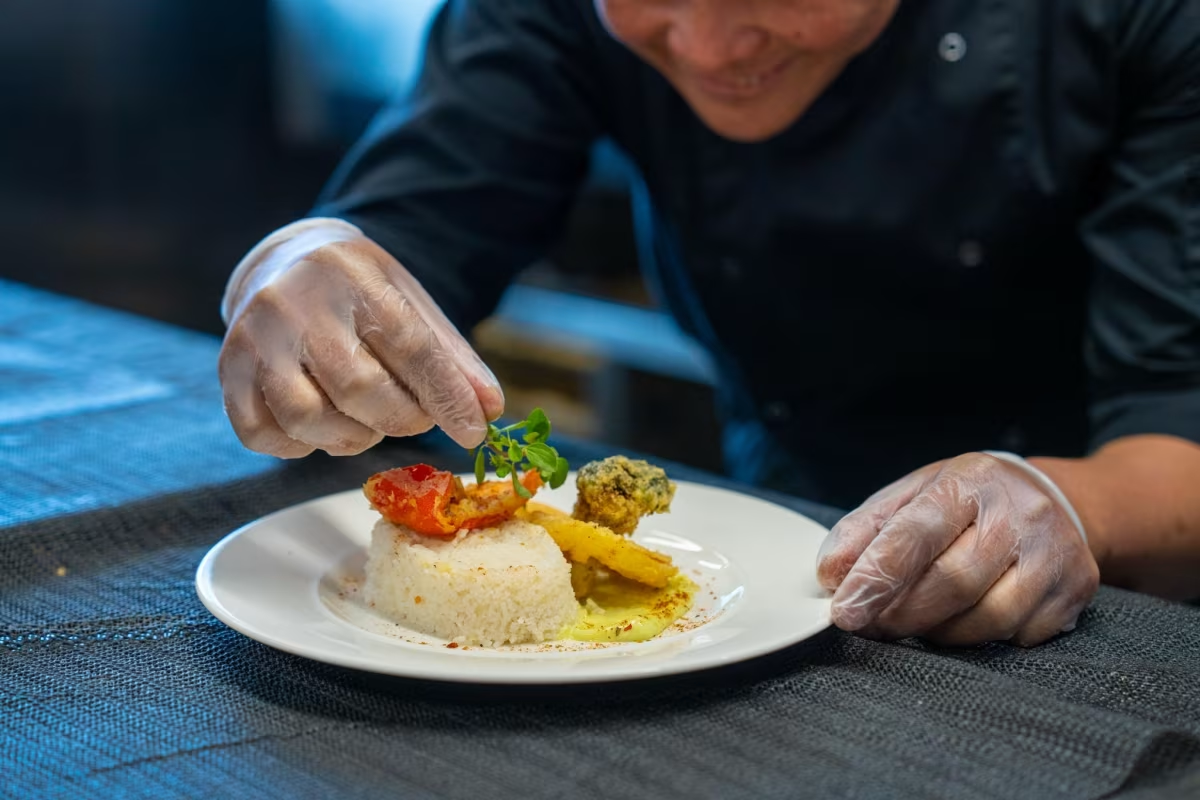
"We also have a barbecue on each trip, perhaps two on longer voyages," Sachin continues. "We always make sure there's something for everyone. Grilled eggplant, sweet potatoes, veggie skewers, baked potatoes, and salads - it's colorful, hearty, and satisfying. Of course, we also provide classic meat dishes such as ribs and steak."
"Some guests only want to eat the same thing, or a selection of dishes every day because that's what they know," Sachin says. "But part of being on an expedition is about trying something new, being daring and adventurous. If you're in Antarctica, why not also explore food from another culture, or explore new vegetarian and vegan dishes?"
Rooted in Tradition, Defined by Taste & Exploration
Chef Sachin's culinary journey began in Mumbai in 2004, where he trained at prestigious hotels, including Ramada Plaza and the Grand Hyatt. While his techniques have evolved over the years, with experience in busy cruise ship kitchens, his Indian roots remain central to his identity as a chef, and continue to influence his menus, particularly vegetarian and vegan dishes.
"Indian cuisine is so diverse, packed with flavor profiles that change from north to south. And, many Indian dishes are already vegan and vegetarian," Sachin explains. "They're made with lentils, chickpeas, rice - complete dishes that are packed with protein. You don't even need to adjust much. Just remove the ghee or butter, and they're often already vegan."
This deep understanding of vegetarian cuisine from a culture where plant-based meals are part of everyday life gives Sachin an advantage in designing menus that are not just inclusive but exciting. A sneak peek at one of Sachin's menus reveals a plethora of choices from global cuisine, from homemade samosas and nasi goreng to garbanzo (chickpea) stew, grilled vegetable wraps with hummus, and pumpkin risotto with warming Indian spices - perfect for days spent in the cold.
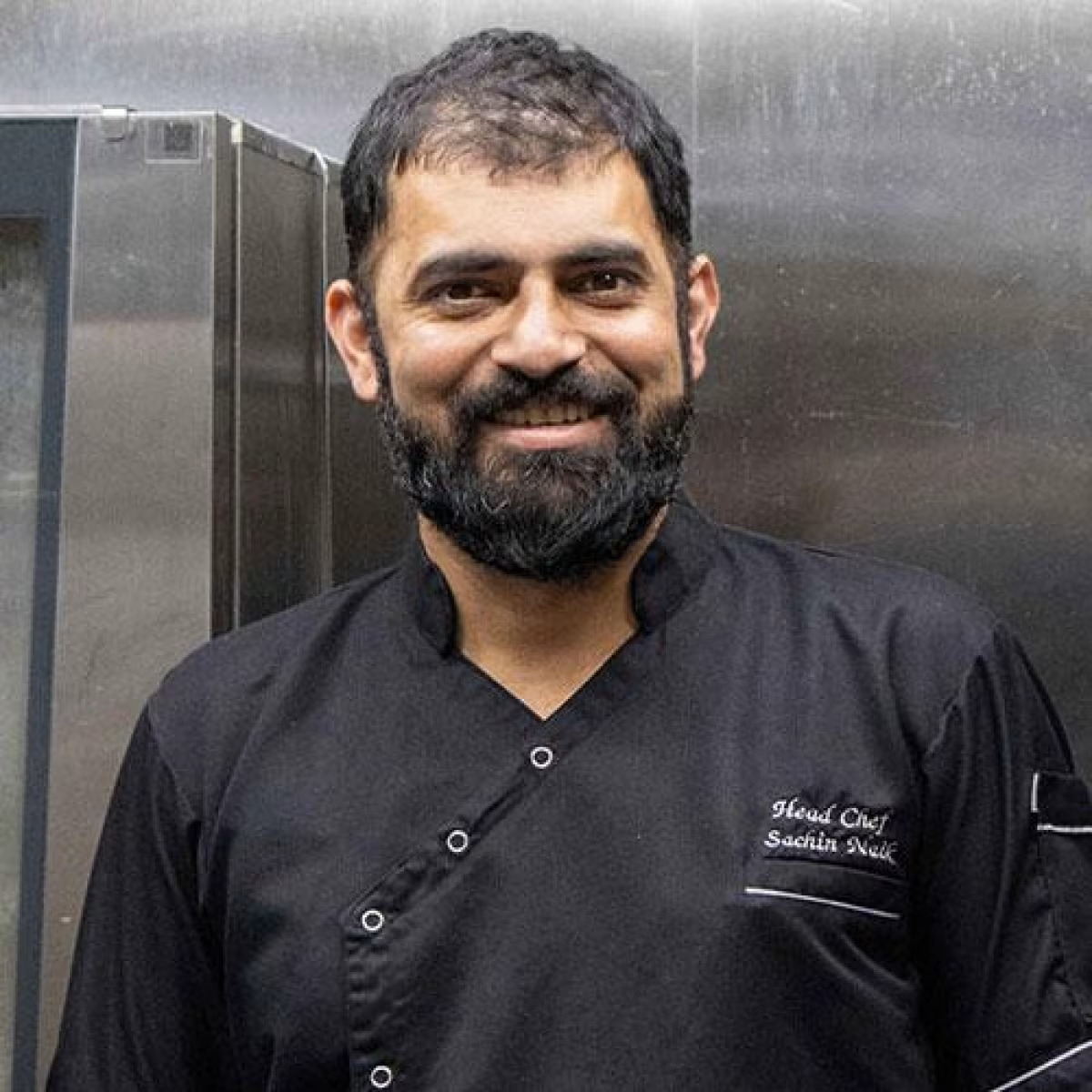
"It makes me proud," he says. "To serve food from my country in Antarctica. I love to see people trying something new and enjoying it! Some guests may never travel to India, but through food, you experience a little piece of it. People's experience doesn't end on deck, or on land - it continues with the food they eat and the conversations it starts." For Sachin, the dining room is just as much a place of discovery as aboard a Zodiac or out on deck.
"You might never go to India or Indonesia or Italy," he says, "but here on board, you can taste those places. Food is a way to connect people, cultures, and memories. And that's part of the journey too."
It's not just Indian food that Sachin infuses his menus with. International cuisines are represented, bringing together the best of vegetarian options, offering variety, uniqueness, and choice - significant when supporting a wide range of diets and nutritional needs on board.
More Than Just an Option - Part of the Polar Experience
In the galley, it's clear that vegetarian options aren't just an afterthought. Instead, they're an invitation to culinary exploration. Much like the wilds of Antarctica or dramatic landscapes of the pack ice beyond the porthole, each plated dinner offers two main options, and Sachin ensures that vegetarian and vegan choices are always among them. Across a 19-day voyage, for example, guests may enjoy over 20 different vegetarian dishes, each reflecting different cultural traditions and representing a gateway into fresh perspectives.
"There's often a belief that vegetarian food is limited," he says. "But that's not true. You can explore Italian, Asian, Mediterranean, and Indian flavors through vegetarian dishes, for example. Perhaps truffle mushroom risotto or Asian crispy noodle salad. Then, perhaps modern favorites, such as halloumi burgers with spicy mayo and fries, there's something for everyone."
Dishes like Nasi Goreng, an Indonesian fried rice dish served with vegetables, sambal, and a fried egg, are guest favorites. It's meals like these, national dishes with identity and stories behind them, that Sachin prefers to serve as intended. "There's a history behind every dish," he says. "You can infuse your own touch with cuisine, but you have to respect the origins. For example, pasta needs the proper sauce, not curry powder! Creativity with vegetarian dishes isn't about randomizing flavors and breaking traditions. There's a balance there between creativity and tradition."
There's also a strong sense of pride in the culinary world, not just in the food itself, but in the impact it has on others. "As a chef, you must have pride in what you're serving. Even if it's just scrambled eggs, if they're overcooked or undercooked, the enjoyment isn't there, the care isn't there. So, every detail matters," Sachin says. "When a guest comes up and thanks me for a great meal, it makes my day. That's why we're here. So, this should guide every decision I make when designing my menu or experimenting with new combinations or dishes. I have to be proud to serve it."
This pride in his work begins way before the vessel departs, with ordering and logistics being crucial to ensuring that ingredients arrive in time and with sufficient quality to create the dining experience guests deserve, even when sailing through remote ice-choked fjords or deep in the pack ice of Antarctica. In many ways, it's this prideful creativity that is transforming guests' perception of vegetarian cuisine.
On an expedition cruise, where diners might expect logistical limitations, they instead find a celebration of vegetables, grains, legumes, and spices that is as rich and diverse as any meat-based menu. Through careful planning and an intuitive understanding of ingredients, it's clear that "meatless" doesn't mean "flavorless."
"Ultimately, guests only see one plate, or the buffet choices," Sachin says, "but there's so much effort behind it, and that plate represents many days of planning, and many people to make it a reality! This is even more reason to take pride in our food - what a waste it would be otherwise."
Fueling the Adventure: The Challenges of Cooking at Sea
An expedition cruise in the Arctic or Antarctica comes with its own set of logistical and environmental challenges. Unlike restaurants on land, there's no last-minute run to the market for fresh basil, tomatoes, or shopping for the finishing flourish for the evening's ragù.
"You have to plan everything in advance," Sachin explains. "Once we leave port, there's no way to get more supplies for perhaps 14, 22, perhaps even 30 days. You must calculate everything: how many kilos of vegetables, how much protein, what's perishable, and what can last."
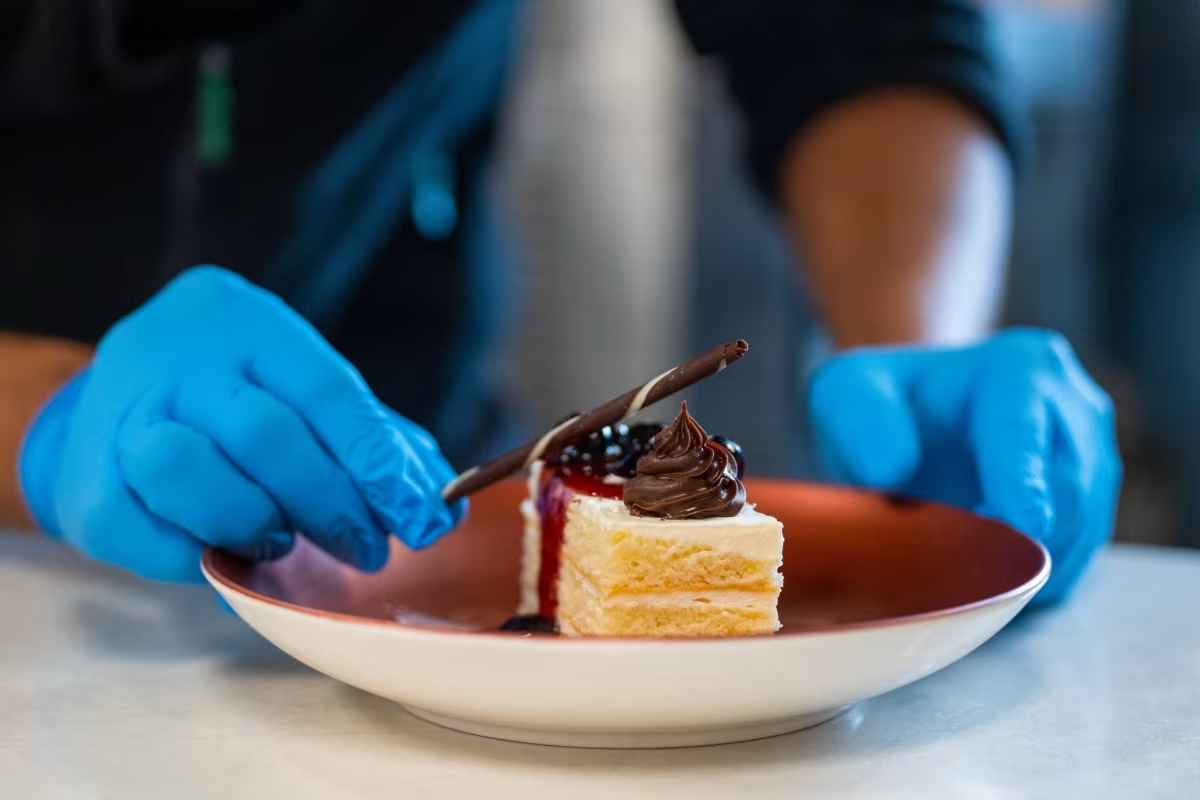
Vegetarian cuisine, particularly, requires careful substitution and improvisation. Fresh produce like tomatoes, cucumbers, and lettuce won't last the whole voyage, so Sachin makes strategic swaps, introducing beets, carrots, cabbage, and canned fruits and vegetables when freshness begins to fade.
"You have to be clever," he says. "It's like solving a puzzle every day. If tomatoes start to go soft, we use them early in the trip. If we run out of tofu, we prioritize lentils or other legumes. Sometimes, I have to adapt. Perhaps a delivery isn't up to the quality we need, so our dishes may be adjusted to ensure we still provide the best dining experience." Just because fresh ingredients only last so many days, quality isn't compromised on board. "Whatever you prepare must still come out perfectly," says Sachin. "If I wouldn't eat it myself, I won't serve it. That goes for quality, but also for experimentation and flavor combinations for new dishes."
Another consideration is ease of preparation. Dishes have to be of high quality, nutritious and appealing, but not overly complex to the point of being inaccessible taste wise for most guests, or excessively difficult for the galley team to produce, particularly in heavy seas. "It can be a challenge in rough weather for sure," Sachin says. "I personally no longer struggle, but many people do, whether feeling seasick or just the general movement making each step in preparation requiring more concentration. Our galley is equipped for cooking at sea, so most things are stable - we just have to make sure we ourselves are stable!"
Your Invite to a Whole New World of Vegetarian Cuisine
Oceanwide guests may come aboard in expectation of seeing icebergs, penguins, and polar bears, but they leave also with treasured memories of conversation with fellow guests over new and exciting dishes, or the warm atmosphere of the dining room at lunch or breakfast with the smell of fresh-baked bread, coffee, and an exciting menu wafting in the air.
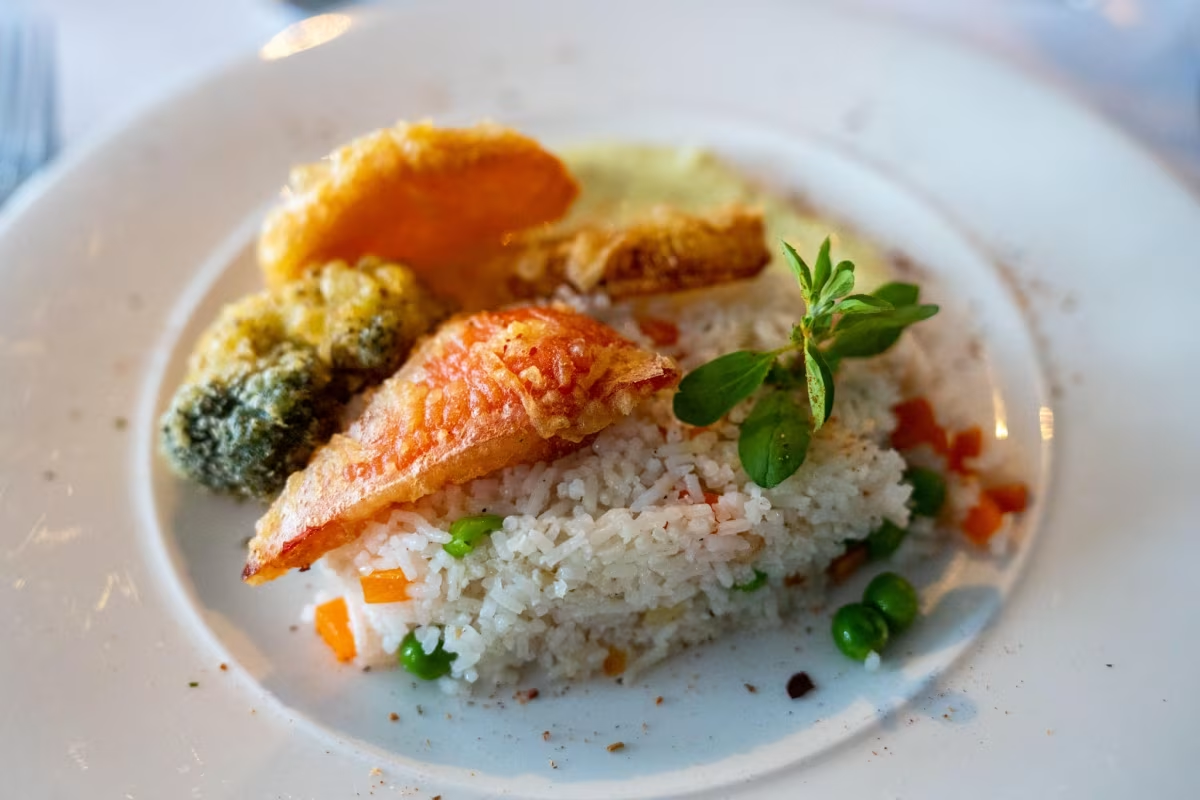
Sachin's approach to vegetarian cuisine is rooted in authenticity, elevated by experience, and fueled by passion. For him, the dining room is just as much a place of discovery as aboard Zodiacs or out on deck. This isn't unique to Sachin. The Oceanwide way is built on authenticity, and is reflected in the food guests will enjoy while exploring the most remote, spectacular locations on Earth, as much as the way in which they will interact with them.
